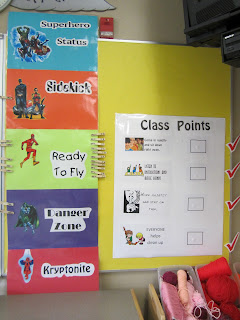I've decided to work for my National Board of Professional Teaching Standards Certification. Commonly called "National Boards." It is a LOT of work. A colleague of mine has hers as a "generalist," and equates it to getting a masters degree except teachers complete their National Boards in 3-15 months. I have contemplated participating in National Boards for about six years and decided now is the time. I was upset to find out that the Federal Subsidy through the Wisconsin Department of Education may not be available next year, so in order to be eligible for it I have to have my portfolio complete by March 31st. If you're not familiar with National Boards, here's the highlights of it for an "Art Early/Middle Childhood" Certification (ages 3-12).
Process:
There are four portfolio entries and six essay questions that must be taken at an assessment center.
The first portfolio entry consists of a storyboard of ten photographs proving the teacher met certain standards and goals. The teacher must write up what they did, how it met the stated goals, and how it effected student learning. The write up is a ten page maximum, with an additional submittal of assessment practices up to five pages. The second two portfolio entries each have different standards for the teacher to prove and require video of the teacher teaching, assessment materials, and another write up of ten pages maximum. The fourth and final entry is a ten page maximum write up of the teacher's accomplishments in including family and community in their work.
Benefits:
In Wisconsin, we have two different types of teaching licenses. There is a "Professional Educator License" which is valid for five years and a "Master Educator License" which is valid for ten years. With the acquisition of a NB Certification, a teacher can apply to become a Master Educator. This is nice because to renew a license teachers have to either take six graduate level classes or complete a PDP (Professional Development Plan) that is accepted by the state and pay a fee for the renewal (about $100 currently).
Currently, Wisconsin offers a grant of $2,500 per year that the certification is valid (ten years).
If a teacher completes all ten aspects of the process and does not get certified they earn three graduate credits. If they do get certified they earn an additional six (total of nine) graduate credits. These can be issued through the college of their choice (upon approval) and applied to district payroll advances.
Validation of quality teaching
Draw backs:
It costs $2,565 to attempt certification. Depending on what you teach and where you live, there may be scholarships available to help with this and the benefits certainly outweigh the cost, but what teacher has an extra two grand laying around? Certainly not me, which is why I'm rushing to complete this before the subsidy is (possibly) gone next year. This subsidy is half the cost, which will help a lot.
It costs $2,565 to attempt certification. Depending on what you teach and where you live, there may be scholarships available to help with this and the benefits certainly outweigh the cost, but what teacher has an extra two grand laying around? Certainly not me, which is why I'm rushing to complete this before the subsidy is (possibly) gone next year. This subsidy is half the cost, which will help a lot.
So, that is what I am working on now. I am partway through the fourth entry (the community involvement entry) as that one does not require much more than writing. I will start recording my teaching tomorrow. I have lessons picked out for the second and third entry and am just a little stumped on what to do for the first one. I have an idea, and plan on exploring that one more this weekend. With each class only meeting every six school days, I have to get rolling on this NOW!


















































